Uranus’ Five Largest Moons
Uranus, the seventh planet from the Sun, is not only known for its peculiar axial tilt but also for its intriguing satellite system. Among the 27 confirmed moons orbiting Uranus, five stand out as the largest and most well-studied. In this article, we will embark on a journey to explore the captivating characteristics and discoveries associated with these five moons: Miranda, Ariel, Umbriel, Titania, and Oberon.
Miranda
The Mosaic Moon Miranda, discovered by Gerard Kuiper in 1948, is the smallest of the five major moons of Uranus. Despite its size, Miranda has captivated scientists with its diverse and fragmented surface. Voyager 2’s flyby in 1986 revealed a moon that resembles a mosaic of different terrains. Steep cliffs, deep canyons, and craters of varying ages paint a picture of a moon shaped by intense geological processes. The stark contrast between young and old terrains on Miranda remains a subject of scientific interest, suggesting a tumultuous past involving tectonic activity and resurfacing events.
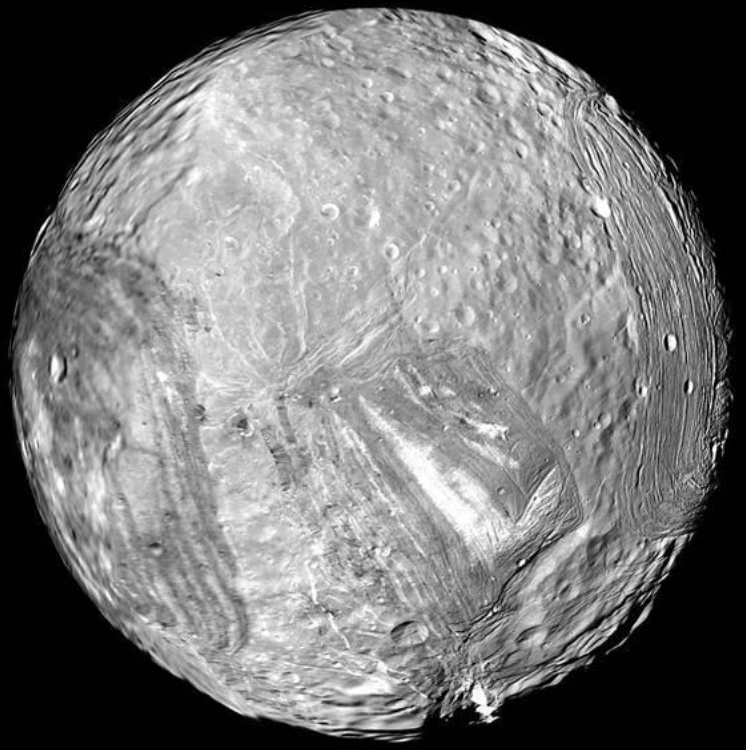
Ariel
The Smooth Operator Ariel, discovered by William Lassell in 1851, stands as the fourth-largest moon of Uranus. Its relatively smooth surface, marked by few visible impact craters, has piqued the curiosity of scientists. The presence of fault systems, valleys, and grooves suggests geological activity that has shaped Ariel over time. Tidal forces caused by Uranus’ gravity and interactions with neighboring moons likely contribute to the moon’s internal heating, enabling processes such as cryovolcanism and resurfacing.
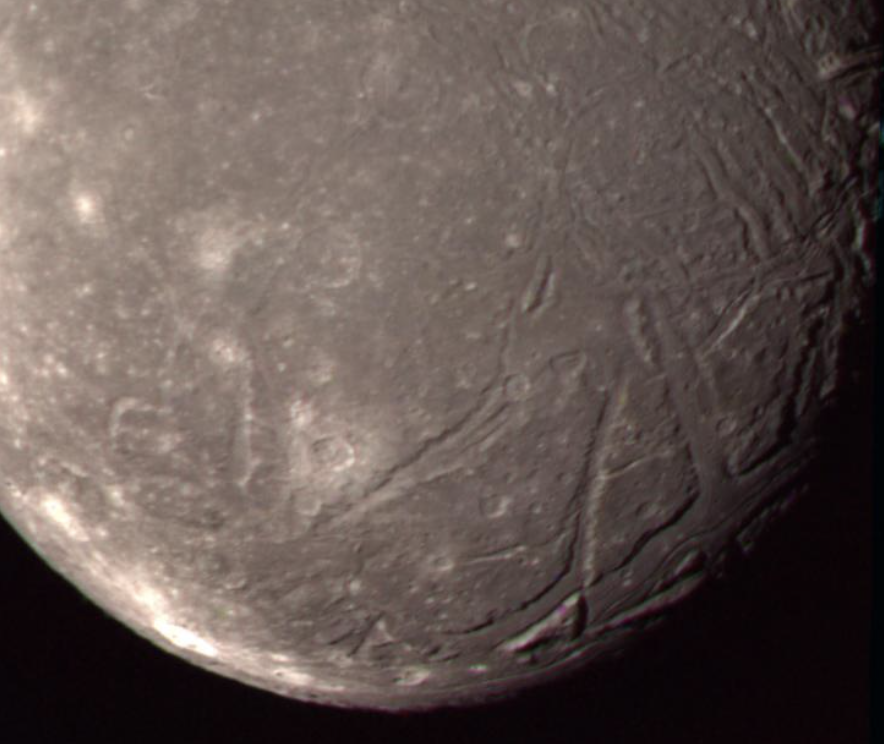
Umbriel
The Dark and Ancient Moon Also discovered by William Lassell in 1851, Umbriel stands as the third-largest moon of Uranus. Umbriel presents a distinctively dark and heavily cratered surface, making it the darkest of Uranus’ major moons. Its ancient terrain suggests that the moon has experienced limited resurfacing, preserving a record of impacts throughout the solar system’s history. The origin of Umbriel’s dark color remains a subject of study, with possible explanations including the accumulation of dark material or the presence of organic compounds on its surface.
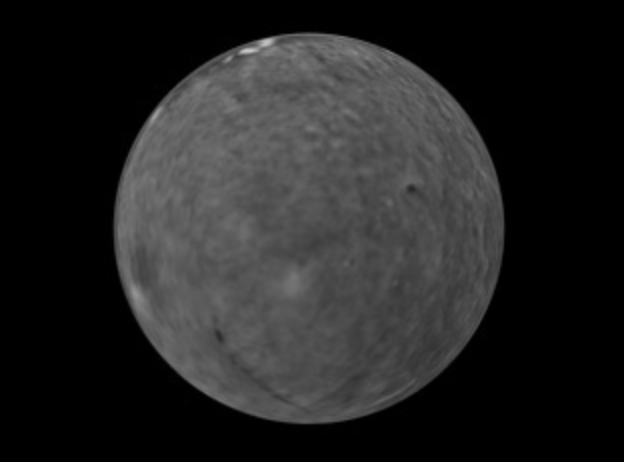
Titania
The Regal Moon Titania, discovered by William Herschel in 1787, claims the title of Uranus’ largest moon and the eighth-largest moon in the solar system. This regal moon showcases a diverse array of geological features, including deep valleys, impact craters, and rifts. The presence of these features indicates a complex geological history involving tectonic activity and possibly cryovolcanism. Titania’s surface composition, mainly composed of water ice, rocky material, and possibly organic compounds, provides valuable insights into the moon’s formation and the processes that have shaped it over time.
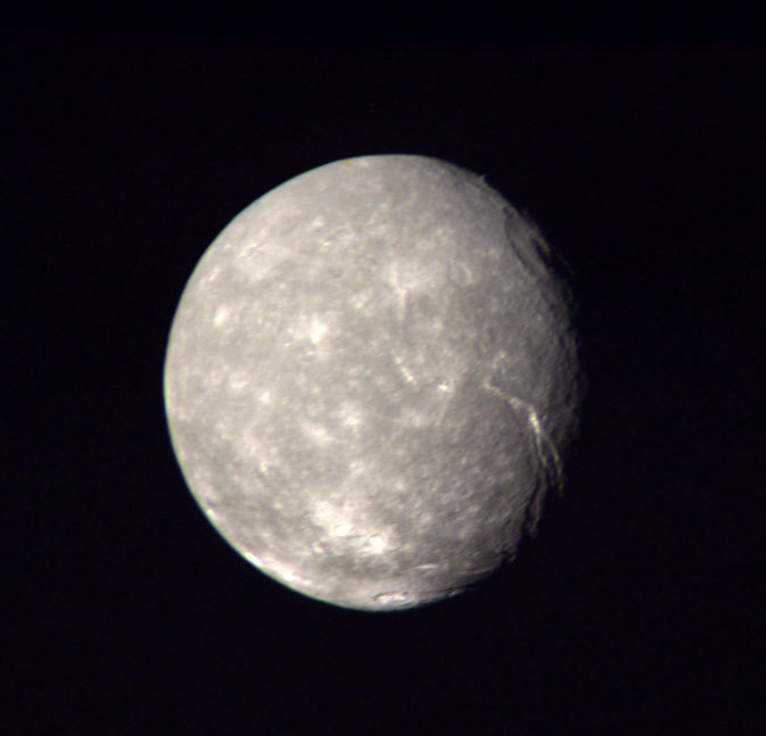
Oberon
The Ancient and Cratered Moon Also discovered by William Herschel in 1787, Oberon takes its place as the second-largest moon of Uranus. Its surface bears the marks of an ancient and heavily cratered terrain. Oberon’s dark patches and bright craters contribute to its distinctive appearance, offering valuable information about the moon’s composition and geological processes. Scientists believe that Oberon’s surface has remained relatively unchanged for billions of years, providing a glimpse into the early history of the Uranian system.
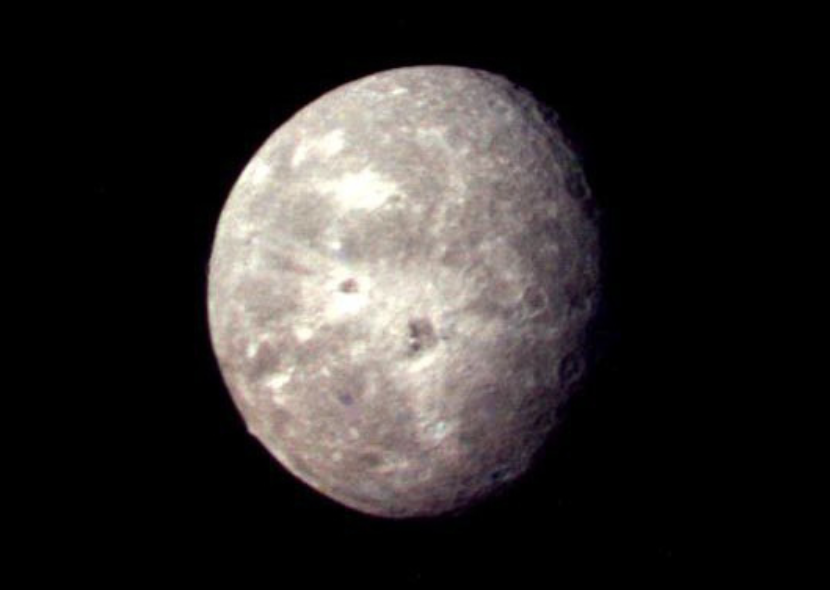
How Many Moons Does Uranus Have?
The five largest moons of Uranus—Miranda, Ariel, Umbriel, Titania, and Oberon—represent diverse worlds that have been shaped by unique geological processes. From Miranda’s fragmented surface to Ariel’s smooth features, Umbriel’s dark and ancient terrain, and the regal landscapes of Titania and Oberon, each moon offers valuable insights into the formation and evolution of the Uranian system.
These moons, with their distinct characteristics and histories, provide scientists with a wealth of information about the dynamics of satellite systems and the interactions between moons and their parent planet. By studying the major moons of Uranus, researchers gain a deeper understanding of the complex processes that have shaped these worlds over billions of years.
Furthermore, the major moons of Uranus are not only fascinating in their own right but also serve as analogs for moons found around other giant planets in our solar system and beyond. By comparing the characteristics of these moons, scientists can draw parallels and make connections to better understand the broader processes at play in our universe.
However, much remains to be discovered about Uranus’ major moons. Future missions and technological advancements will undoubtedly bring new insights and unveil further mysteries. Exploring these enigmatic moons will shed light on their origins, geological activity, and potential for harboring environments suitable for life.
As we continue to unravel the secrets of Uranus and its moons, we deepen our understanding of the incredible diversity and complexity of our celestial neighborhood. The study of these moons not only expands our knowledge of our own solar system but also provides crucial information for understanding exoplanetary systems and the broader universe.
Wrap Up
In conclusion, the five largest moons of Uranus—Miranda, Ariel, Umbriel, Titania, and Oberon—hold the key to unlocking the secrets of this distant planet. Through their unique characteristics and geological features, these moons provide valuable insights into the formation and evolution of the Uranian system and offer a glimpse into the broader processes that shape our universe. As we continue to explore and study these moons, we deepen our understanding of the vast and awe-inspiring wonders of our solar system.
